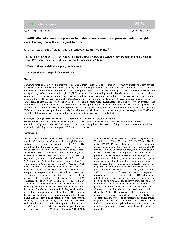摘要
Membrane proteins are involved in many functions due to their cellular locations. Although the effect of drought on plants has been extensively studied, little is known about the changes of membrane proteome in plants under drought conditions. We used gel-based proteomics to study the effect of drought on membrane protein expression in maize (Zea mays L.) plants. Moderate drought stress was applied by 16% (w/v) polyethylene glycol (PEG) treatment of maize seedlings for 8 h. Membrane proteins were extracted from membrane fraction of leaf tissues and separated by two-dimensional electrophoresis followed by matrix-assisted laser-desorption ionization time of flight mass spectrometry. Seventeen protein spots were up-regulated and 18 were down-regulated in response to PEG stress. Hydropathicity (gravy) analysis indicated that 8 spots were hydrophobic and 26 spots were hydrophilic. The identification of proteins indicated that these PEG responsive proteins played diverse functions. Furthermore, the prediction of subcellular localization suggested that 25 spots located in chloroplast, 2 in cytoplasm, while others had other location. Therefore, PEG-responsive membrane proteins are mainly from chloroplasts, which are very sensitive in response to drought stress. Besides, the suitability of the present extraction method for membrane proteins was discussed in the text.
- 出版日期2011-9
- 单位河南农业大学
